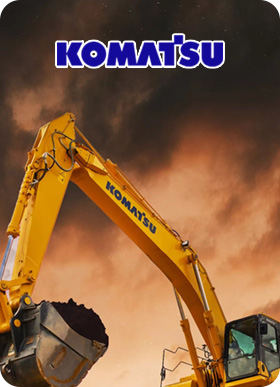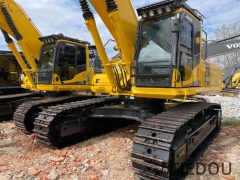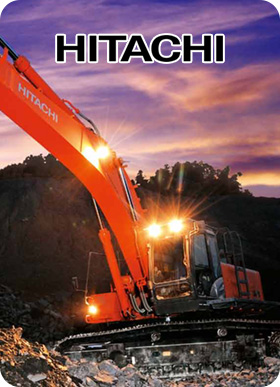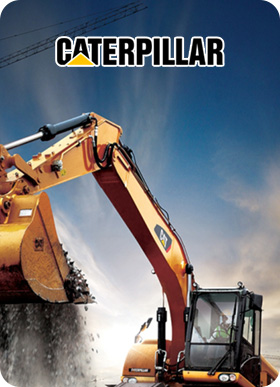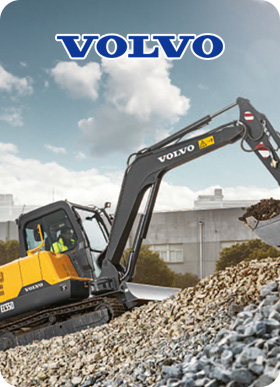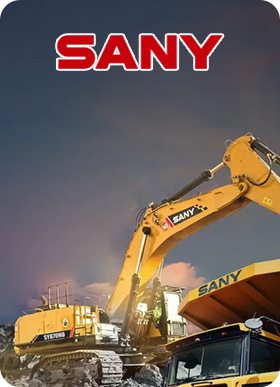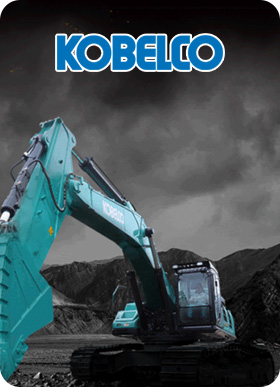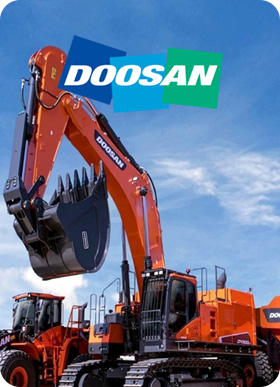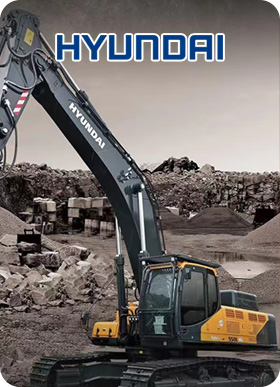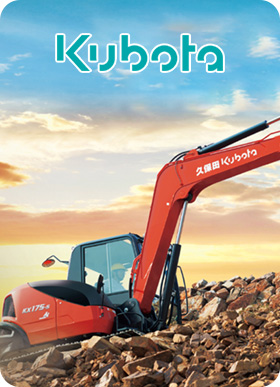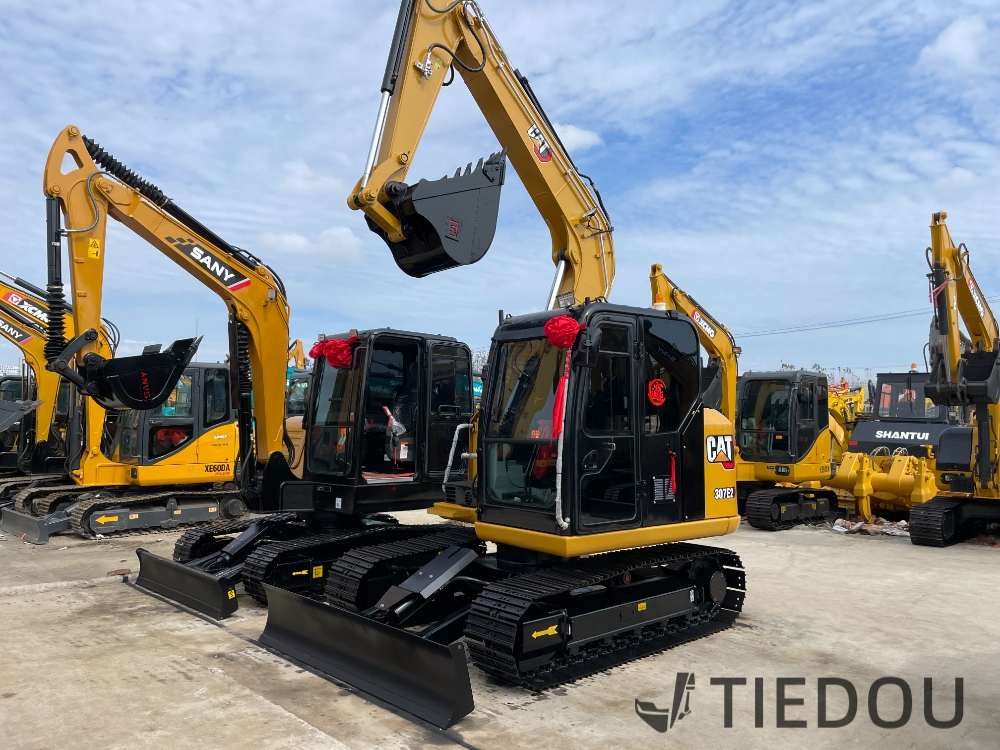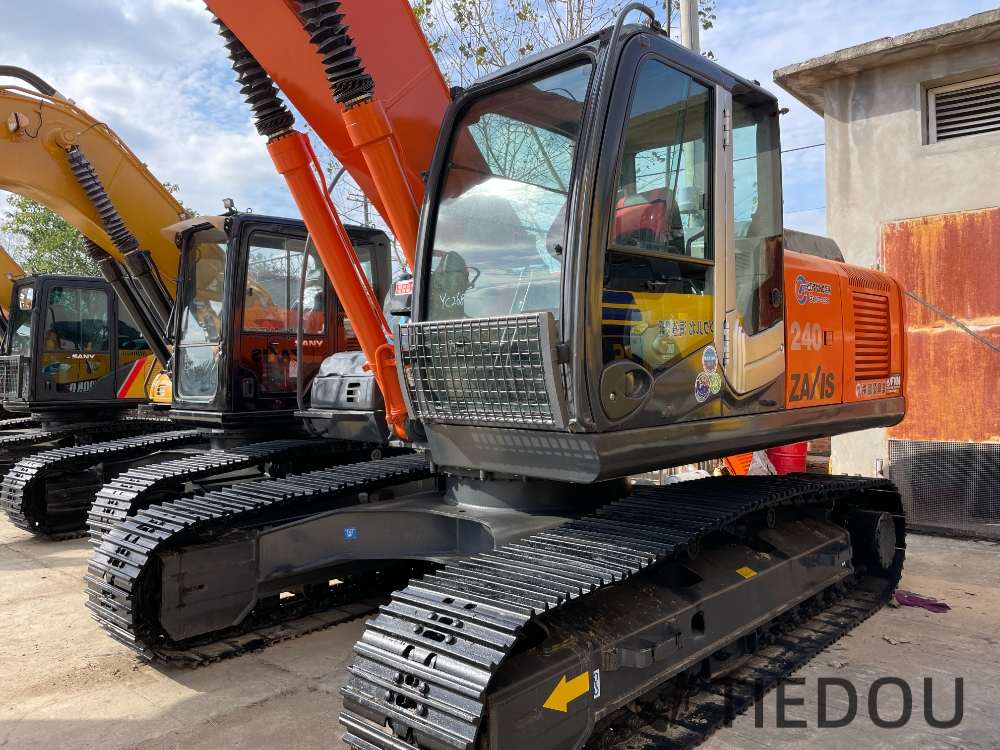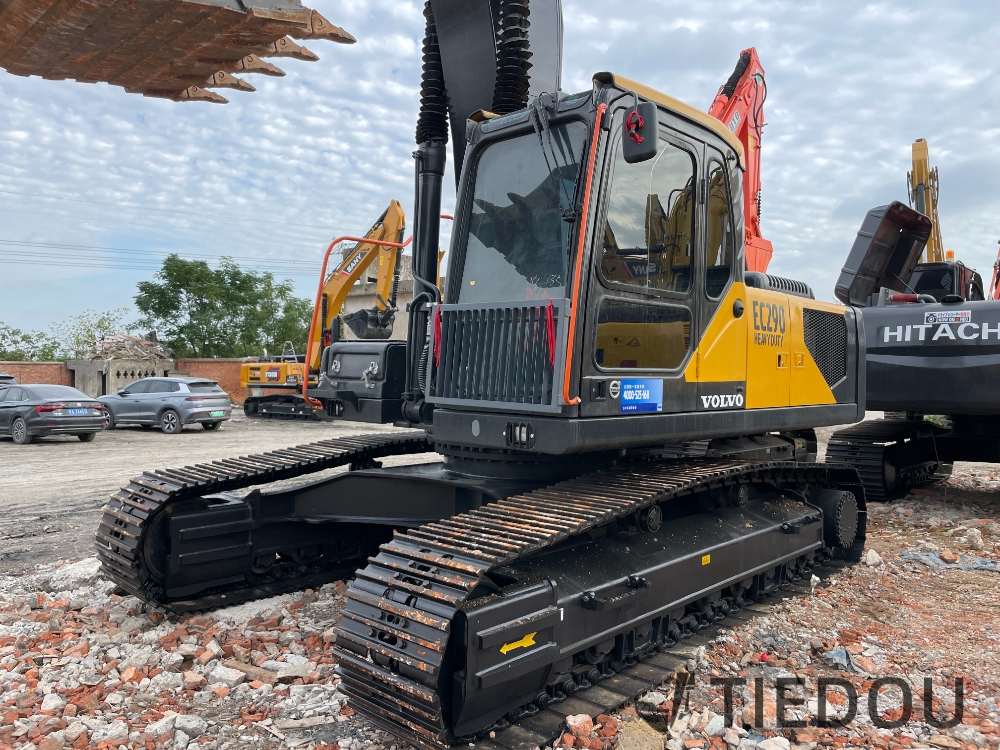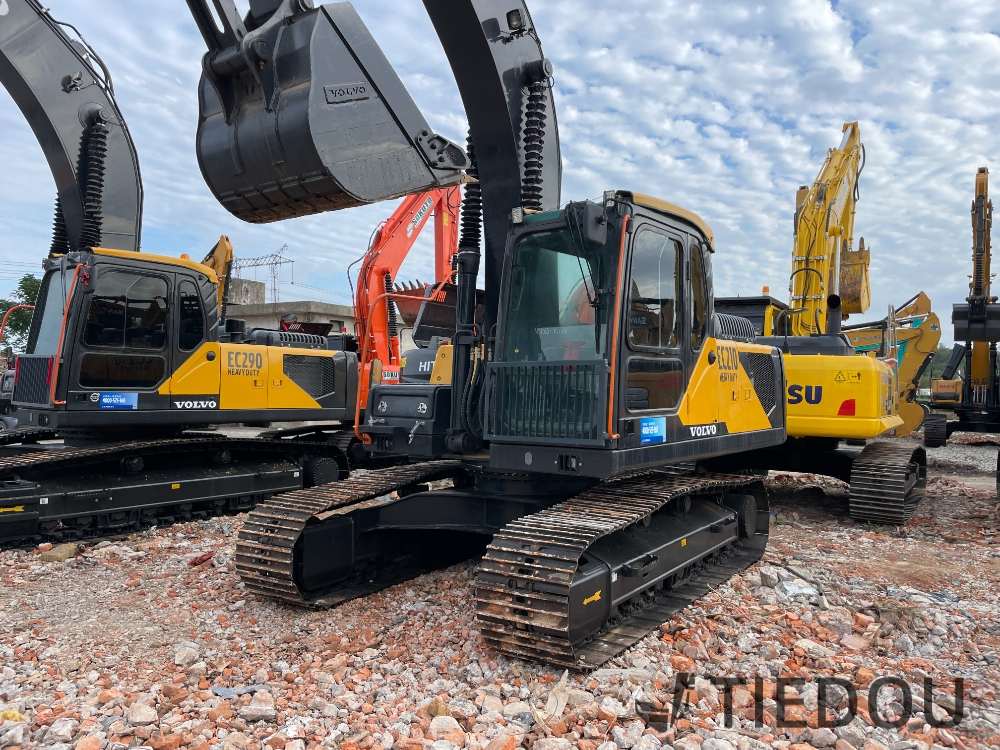1. The beginning of the legend: the glorious cornerstone of the Caterpillar brand
In the vast starry sky of engineering machinery, Caterpillar is like a dazzling star, shining with incomparable brilliance. Its history can be traced back nearly a hundred years ago. From the beginning of its establishment, Caterpillar has been dreaming of creating excellent engineering equipment. This dream is like a prairie fire, spreading around the world and creating today's glory.
Every product of Caterpillar is a vivid interpretation of the brand concept. From the careful conception of the design team, to the meticulous craftsmanship of engineers on every component, to the strict quality inspection links, all of them reflect the persistent pursuit of quality. This almost harsh requirement for quality enables Caterpillar equipment to operate stably under harsh working conditions around the world. Whether in the scorching desert or the icy polar regions, Caterpillar excavators have won the trust and praise of users with their excellent performance and reliability.
As a member of this legendary brand, the Caterpillar 307E second-hand excavator carries the profound heritage and value given by the brand. It is not just a piece of equipment, but also the continuation and inheritance of the Caterpillar brand spirit in the second-hand market. It is a powerful tool in the hands of countless builders, continuing to write a magnificent chapter of engineering construction one after another.
2. Source of power: heart-like engine system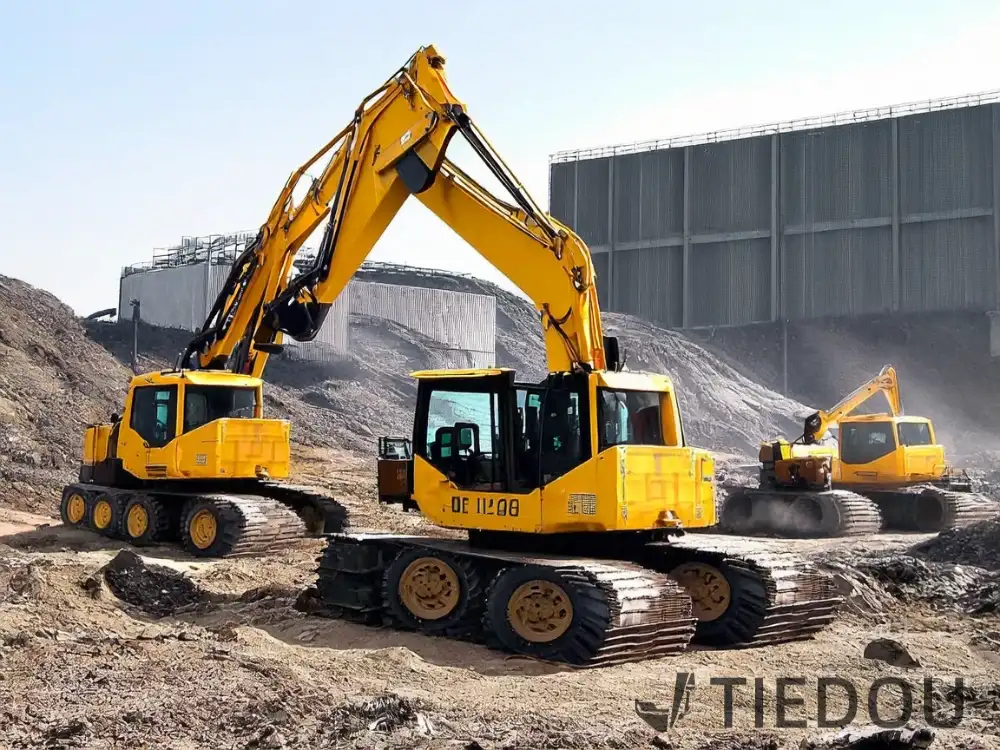
The power core of the Caterpillar 307E second-hand excavator - the engine, can be said to be its soul. The engine equipped with this excavator is a masterpiece carefully developed by Caterpillar. It combines advanced technology and exquisite craftsmanship to provide a continuous source of power for the strong performance of the excavator under various working conditions.
From the technical parameters, its engine model is Cat C2.6. This model has a very high reputation in the field of construction machinery. Its power can reach 42.9kW, which is in a leading position among excavators of the same level. Whether it is digging hard rocks or quickly clearing a large amount of earth, it can easily cope with it and show extraordinary working ability.
The engine has a displacement of 2.6L. This reasonable displacement design allows the fuel to be fully burned in the cylinder, which not only ensures efficient power output, but also takes into account fuel economy. It has 4 cylinders, each with a cylinder diameter of 94mm and a stroke of 100mm. This design makes the piston movement in the cylinder more stable and the power output more linear. When the engine starts, the piston reciprocates rhythmically in the cylinder, like an exciting symphony, playing the prelude to the excavator's work.
In actual work, the Caterpillar 307E engine shows amazing performance. In mining operations, facing extremely hard ores, it can continuously and stably output power, drive the bucket deep into the ore pile, and dig out the ores one by one. Even under long-term and high-intensity working conditions, the engine will not have problems such as overheating and power attenuation, and its reliability is fully reflected.
In addition, in the narrow construction site environment in urban construction, the excavator needs to start and stop frequently for precise excavation operations. The 307E engine can respond quickly to operating instructions, providing the required power in an instant, making the excavator's movements precise and smooth. This excellent power performance and response speed are due to Caterpillar's deep accumulation and continuous innovation in engine technology research and development.
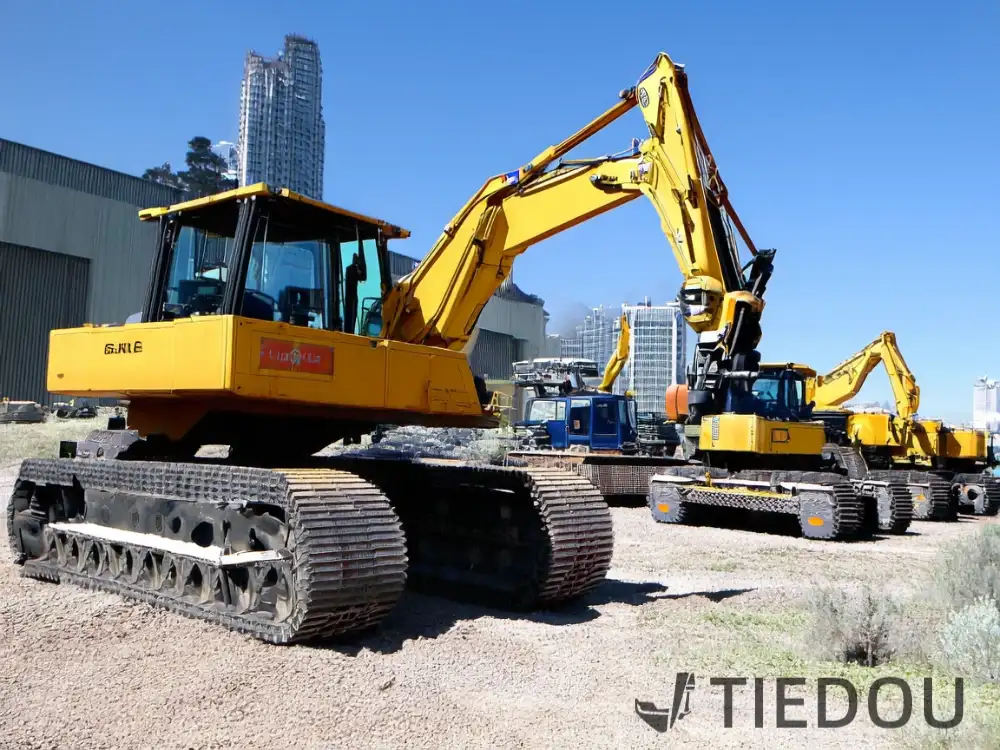
3. Excavation tool: excellent working device design
The working device of the Caterpillar 307E second-hand excavator is one of the key factors for it to become an engineering legend. Its working device includes boom, dipper and bucket. The perfect combination of these three parts makes the excavator perform well in operations such as excavation and loading.
The boom is 3.7m long and its design structure is sturdy and reasonable. During the excavation process, the boom is like the arm of the excavator, which can stably withstand huge pressure and weight. It is made of high-strength steel and has undergone a special heat treatment process to improve the strength and toughness of the steel. Whether it is in the foundation pit operation with a large excavation depth or in the trimming operation of the high slope, the boom can maintain good stability to ensure the safe progress of the excavation work.
The bucket arm is 1.65m long and is closely connected to the boom, playing an important role in transmitting force and expanding the excavation range. The design of the bucket arm fully considers the transmission efficiency of the excavation force. The hydraulic system and mechanical structure inside it work together to effectively convert the engine power into excavation force. When excavating materials in some narrow spaces, the bucket arm can flexibly adjust the angle and position so that the bucket can accurately reach the target position and complete the excavation task.
As the part that directly contacts the material, the design of the bucket is even more ingenious. The standard bucket capacity is 0.33m³. Its shape and structure have been optimized to minimize resistance during excavation and improve excavation efficiency. The edge of the bucket is made of wear-resistant material, which can maintain good wear resistance even in the case of long-term excavation of hard materials, extending the service life of the bucket.
In actual engineering applications, the working device of Caterpillar 307E has shown excellent performance. In the construction of water conservancy projects, a large amount of river earthwork needs to be excavated. The working device of 307E can quickly excavate the soil in the river channel and load it onto the transport vehicle. Its efficient excavation and loading capacity greatly shortens the construction period. In the construction of building foundations, facing complex geological conditions, the working device of the excavator can flexibly adjust the excavation angle and depth, accurately excavate the foundation pit shape that meets the design requirements, and lay a solid foundation for subsequent construction.
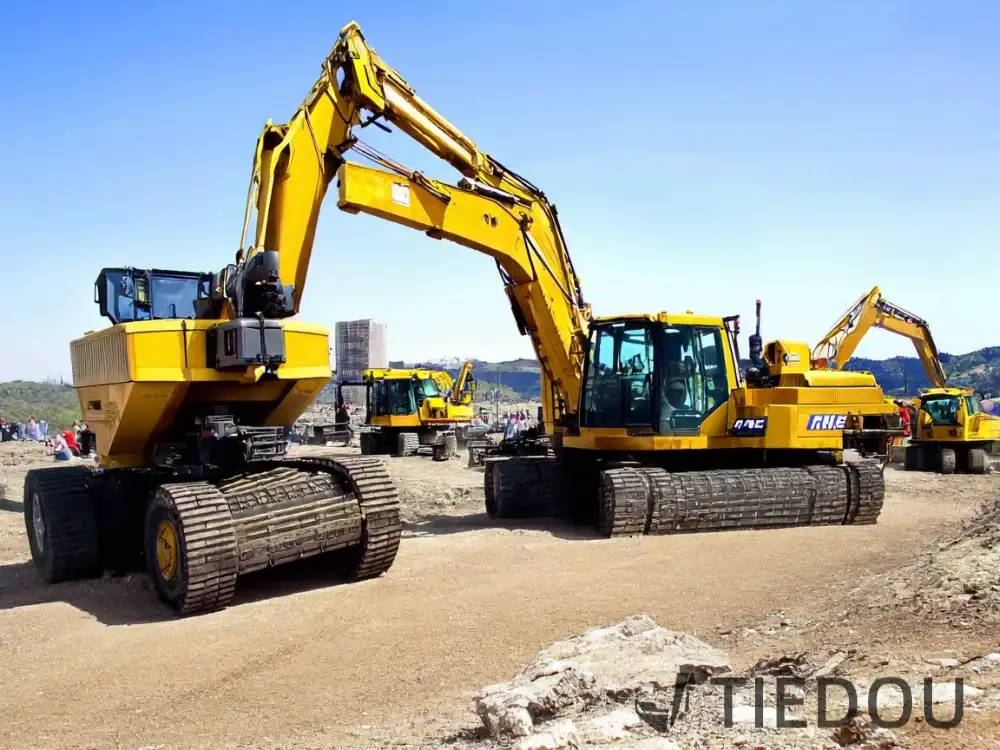
4. flexible and stable: the charm of the walking and slewing system
The walking and slewing system of Caterpillar 307E second-hand excavator is the guarantee for its flexible shuttle and efficient operation at the construction site. The perfect combination of these two systems makes the excavator like a nimble dancer, showing an elegant and powerful posture on the stage of the project.
First look at the walking system, which consists of crawler tracks, drive wheels, guide wheels, supporting wheels and crawler tensioning devices. The track shoe is 400mm wide and 2920mm long. This design provides the excavator with a good ground contact area and reduces the ground contact pressure, allowing the excavator to walk stably on complex terrain such as soft ground and muddy construction sites without sinking easily. The track material is tough and has good wear resistance, which can adapt to various harsh ground conditions. Even on construction sites full of sharp stones, the track can maintain good performance and reduce the risk of wear and damage.
In terms of walking speed, the 307E has high and low gears, with a high speed of 4.5km/h and a low speed of 2.7km/h. When the working position needs to be transferred quickly, such as moving between different construction areas in a large construction site, the high gear can quickly reach the destination and save time. When performing fine excavation operations or moving in narrow spaces, the low gear can provide more precise control to ensure the safety and stability of the excavator.
The slewing system is the key to the excavator's flexible operation. The slewing speed of 307E is 12.4r/min, which enables the excavator to quickly and accurately adjust the working direction during slewing operation. Whether it is adjusting the position of the bucket during excavation or aligning the transport vehicle during loading operation, the fast slewing speed can greatly improve the working efficiency. Moreover, the stability of the slewing system is extremely high. During the slewing process, the body of the excavator will not shake significantly, ensuring the accuracy and safety of the excavation operation.
In actual engineering scenarios, the advantages of the walking and slewing system are fully reflected. In road construction projects, excavators need to move frequently between different sections of the road. The walking system of 307E can easily cope with various road conditions and reach the designated position quickly and accurately. In the construction of pier foundations for bridge construction, due to limited working space, the excavator needs to frequently slew to adjust the bucket position. The high precision and stability of its slewing system ensure the smooth progress of the excavation operation and provide a strong guarantee for the precise construction of the pier foundation.
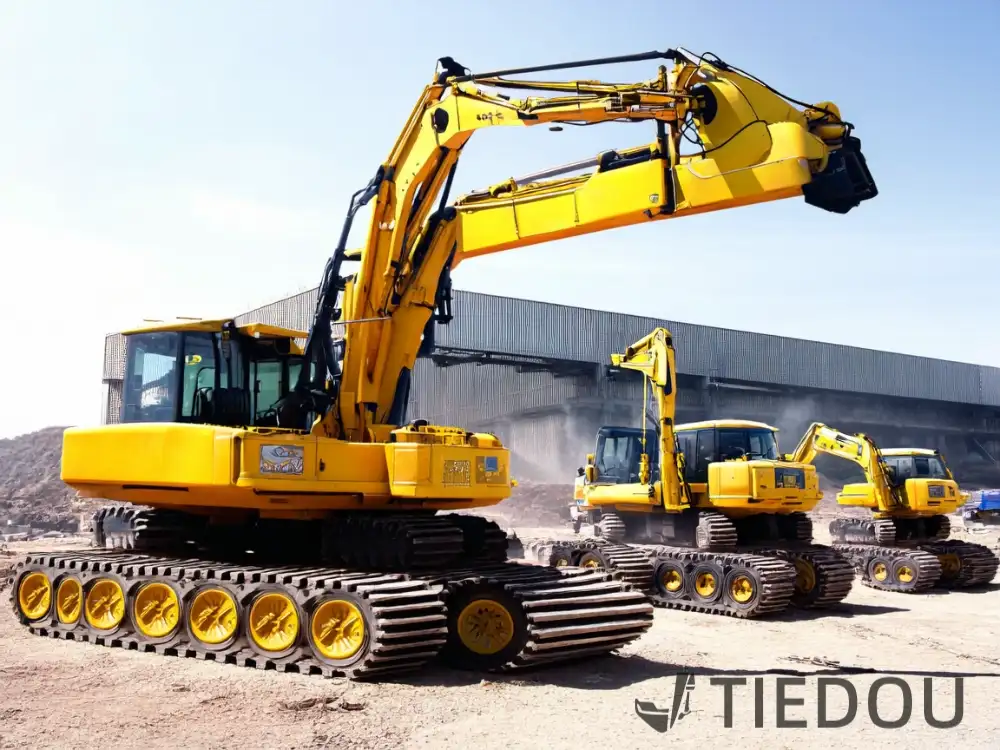 5. Soul of Precision: Analysis of Advanced Hydraulic System
5. Soul of Precision: Analysis of Advanced Hydraulic System
The hydraulic system of Caterpillar 307E second-hand excavator is the core of its precise movement and efficient operation. This advanced hydraulic system is like the nervous system of the excavator, accurately controlling the movement of each component, making every movement of the excavator as precise and smooth as flowing water.
As the power source of the hydraulic system, the hydraulic pump is independently developed and produced by Caterpillar. It uses advanced technology and high-quality materials to ensure reliability and stability in long-term operation. Its maximum hydraulic flow can reach 120L/min. This high-flow design provides sufficient power for each hydraulic actuator of the excavator. During the excavation operation, when the operator operates the joystick, the hydraulic pump can respond quickly and deliver the hydraulic oil to the corresponding hydraulic cylinder or hydraulic motor at a suitable pressure and flow to drive the working device and the walking and rotating system.
The walking hydraulic circuit adopts a variable system, which can automatically adjust the flow and pressure of the hydraulic oil according to the walking resistance of the excavator. When the excavator walks on flat ground, the system will reduce the flow and pressure of the hydraulic oil, reduce energy loss, and improve walking efficiency. When encountering a situation with greater resistance such as uphill or soft ground, the system will automatically increase the flow and pressure of the hydraulic oil to ensure that the excavator can move stably.
The control hydraulic circuit is a load-sensitive system, which is a highly intelligent hydraulic control technology. It can sense the load size of the working device in real time and automatically adjust the pressure and flow of the hydraulic oil according to the load conditions. When digging hard materials, the system will increase the pressure of the hydraulic oil, increase the digging force, and ensure that the bucket can cut into the material smoothly. When performing light load operations, the system will reduce the pressure, increase the speed and accuracy of the action, and achieve a balance between energy saving and efficient operation.
In actual engineering operations, the advantages of the hydraulic system are particularly obvious. In delicate garden landscape projects, excavators need to perform precise excavation and shaping operations. The hydraulic system of the 307E can accurately control the movement of the bucket, whether it is digging small tree pits or shaping terrain, it can achieve millimeter-level accuracy. In large-scale earthwork projects, the hydraulic system can remain stable under high-intensity excavation operations, ensuring the efficiency and reliability of the excavator.
6. Comfortable driving: cab design and humanized care
The Caterpillar 307E second-hand excavator not only performs well in performance, but also fully reflects the humanized care for the operator in the design of the cab. A comfortable cab environment is essential for operators who work for a long time. It can improve the operator's work efficiency and reduce fatigue.
When entering the cab, the first thing that catches your eye is the spacious and bright space. The layout of the cab is reasonable, and all operating buttons and joysticks are within the operator's reach, which is convenient for operation. The seat adopts ergonomic design and can be adjusted according to the operator's body shape and sitting posture to provide good waist and back support. Even during long-term operation, the operator will not feel obvious back pain.
The cab is equipped with an advanced air-conditioning system, which can create a comfortable temperature environment for the operator, whether in hot summer or cold winter. In high temperature environment, the air conditioner can quickly reduce the temperature in the cab, so that the operator is free from the heat. In cold weather, the warm air function of the air conditioner can make the cab warm as spring, ensuring the operator's operational flexibility.
The dashboard is simple and clear, and various instruments and indicator lights can clearly display the working status of the excavator. The operator can understand important parameters such as engine speed, oil temperature, water temperature, hydraulic system pressure, etc. in real time through the dashboard, and discover potential problems in time. At the same time, the cab is also equipped with good sound insulation facilities, which effectively reduces the noise of the engine and the external environment, providing the operator with a relatively quiet working environment.
In terms of vision, the design of the cab is also unique. The large area of glass windows provides a good field of view, and the operator can clearly see the working environment around the excavator. Whether in excavation or walking, it can accurately judge the distance and position relationship with surrounding objects to improve the safety of operation.

